This Yanmaodao was made in Longquan, a region central to sword production in the Song Dynasty. The blade is folded high-carbon steel that leaves a pattern like flowing water on the blade. It is of tempered 1045 and 1065 steel containing 3,800 layers. Folded steel was a common blade-making technique in China as it minimized impurities and melded hard and flexible steels together for a compromise containing both qualities.
The crossguard and pommel are brass with some copper accenting. The grip is of darkened wood overlaid with latticework leather cord. The scabbard is of darkened wood with brass accenting. The sword comes in an ornamented gift box with a wood-boxed maintenance kit.
One of the two main military swords of the Ming and Qing Dynasties, the Yanmaodao ”goose-quill saber” had a straighter blade than its brother Liuyedao. The subdued curve of the Yanmaodao generally only becomes pronounced at the tip. A good chop and thrust sword, the Yanmaodao can trace its origins to Chinese adoption of aspects of swords wielded by their Turko-Mongol foes.
Unlike the more curved Liuyedao, the Yanmaodao seems to have been equally influenced by the earlier straight-edge Jian of the Chinese. It retains enough of the Jians straightness to be used in the exercises and forms of the Jian. Despite the influx and adoption of more curved saber designs, the straighter Jian was held in the highest regard among bladed weapons well into the medieval and Imperial periods and it seems that the Yanmaodao in form seeks to retain this noble lineage and balance it with the demonstrated cutting power of the later sabers.
Please Note: The color and designs on the silk fabric overlay of the box may vary


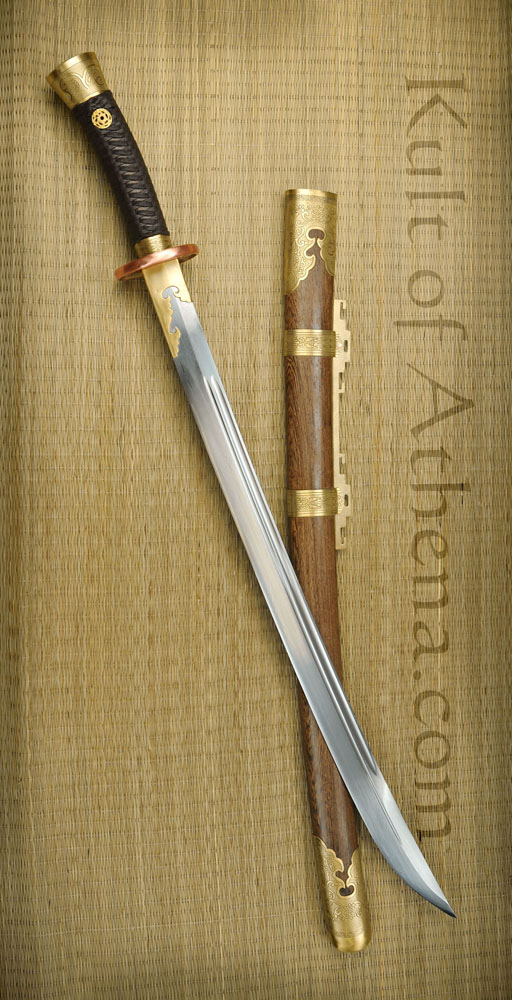
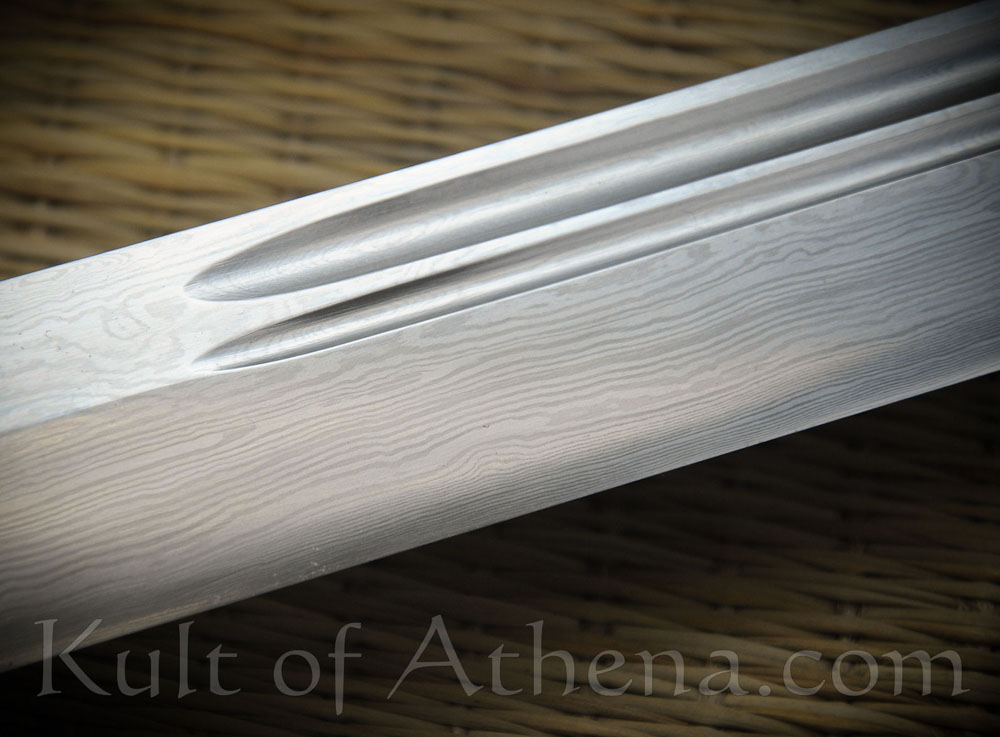

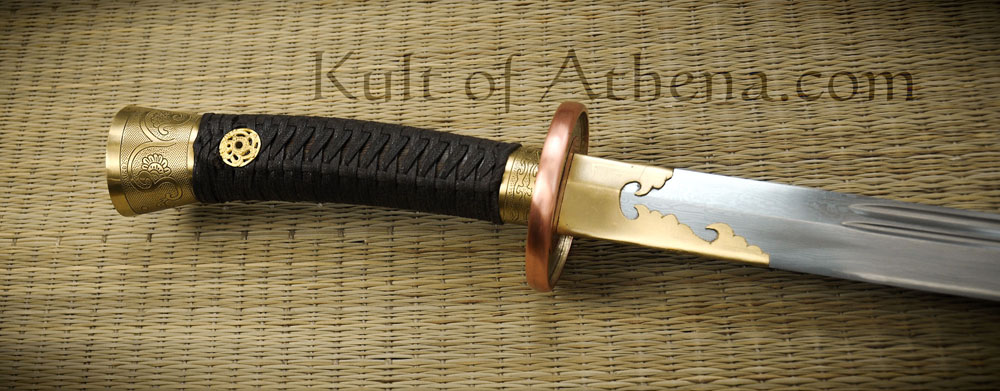
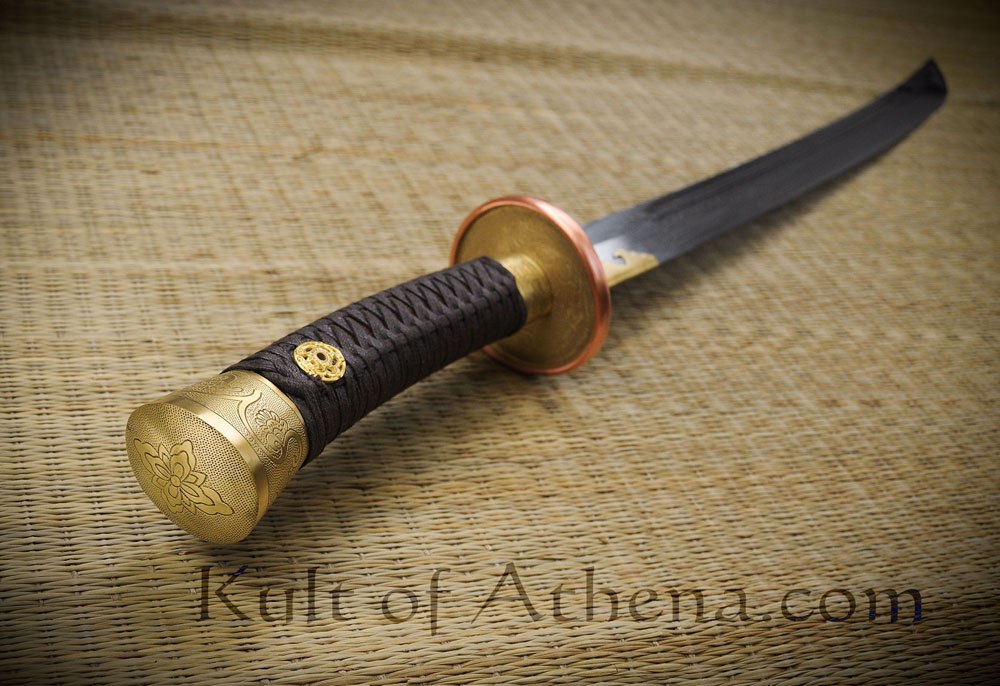
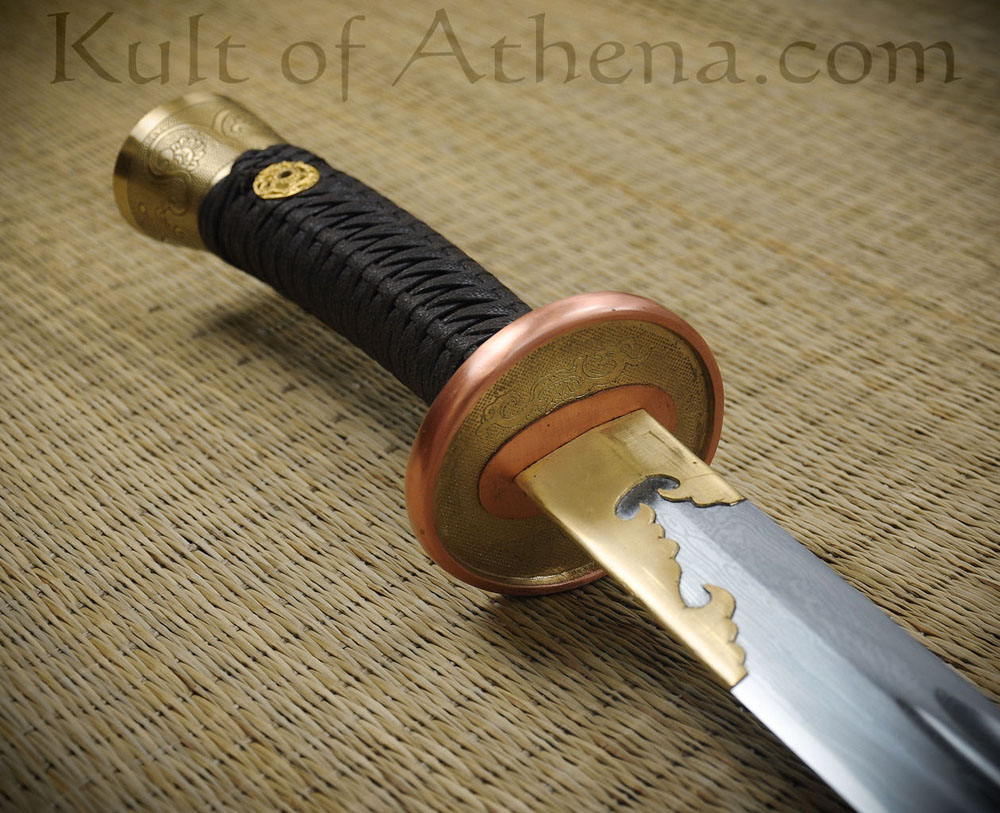
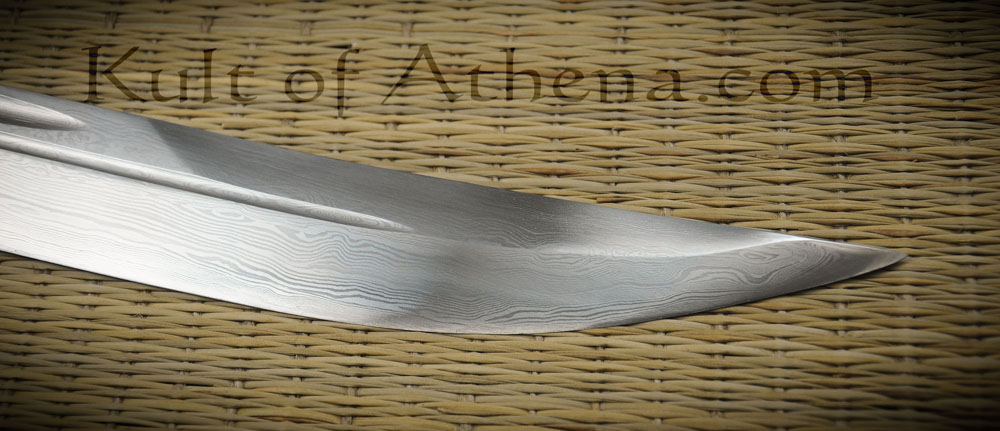
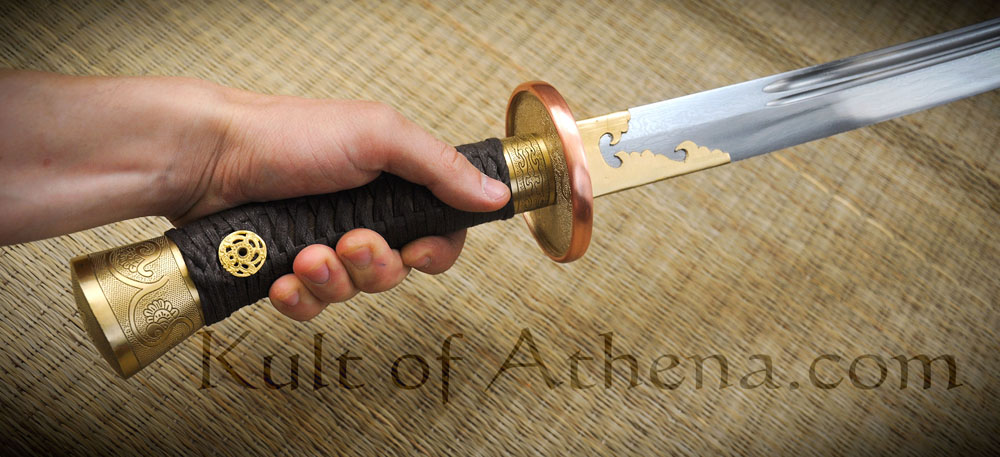
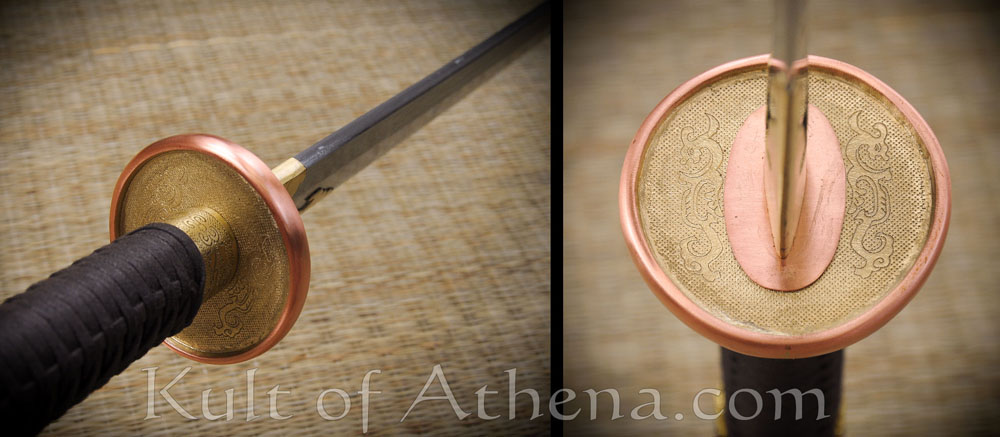


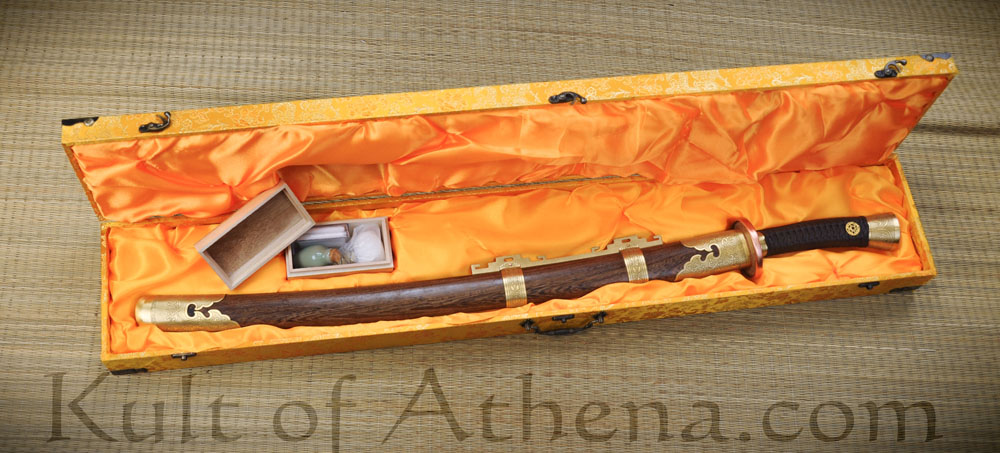

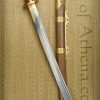

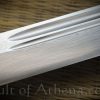
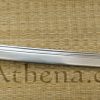
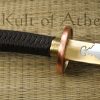
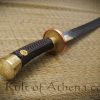



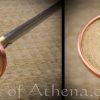

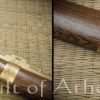
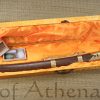

Geno –
Short of excellent I was really excited to get this sword. This particular Yanmaodao design finds a medium between the other classes of Chinese sabers. First, I have to say that the folded steel makes for an absolutely gorgeous blade. It also handles quite well and feels very kinetic. However, the item I got was far from perfect. The copper guard is very badly scuffed and the blade has a tiny but noticeable blemish in the form of a small but deep “incision” near the guard. I’ve smeared this area with Renaissance Wax for fear of rust but this should never have been an issue. The other problem I had with this blade is that certain fittings on the hilt and scabbard required extra glue to stabilize. For a >$500 blade the construction should have been much better. Nevertheless, this is a decent sword and worth considering for the quality of the blade. I just wish I was sent a better version, considering the price.